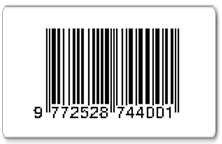Development of Accounting Systems Using Blockchain Technology
Abstract
Business organizations need adequate data transparency to produce real time and high quality information. The Double Entry accounting system is considered not enough to provide these things, so development of Triple Entry accounting system is needed. Triple Entry accounting system is closely related to Blockchain. This study uses a systematic literature review that leads to development of accounting systems using blockchain technology. This is because the implementation of the Triple Entry accounting system to store transactions permanently on the blockchain ensures that the sender has the authority to carry out non-reversible transactions using public key cryptography.
Keywords
Full Text:
PDFReferences
Alboaie, S., Rata, A., Horomnea, E., & Vaida, M. (2018). Semantic Analysis Audit in Triple-Entry Accounting Systems Based on Blockchain. ACTA TECHNICA NAPOCENSIS Electronics and Telecommunications, 59(1), 14–18.
Baber, H. (2019). Blockchain Technology for Industry 4.0 Secured, Decentralized, Distirbuted and Trusted Industry Enviroment. In Blockchain Technology for Industry 4.0 Secured, Decentralized, Distirbuted and Trusted Industry Enviroment.
Bonyuet, D. (2020). Overview and impact of blockchain on auditing. International Journal of Digital Accounting Research, 20(February), 31–43. https://doi.org/10.4192/1577-8517-v20_2
Bryer, R. A. (1993). Double-Entry Bookkeeping and the Birth of Capitalism: Accounting for the Commercial Revolution in Medieval Northern Italy. In Critical Perspectives on Accounting (Vol. 4, Issue 2, pp. 113–140). https://doi.org/10.1006/cpac.1993.1008
Cai, C. W. (2021). Triple-entry accounting with blockchain: How far have we come? Accounting and Finance, 61(1), 71–93. https://doi.org/10.1111/acfi.12556
Chang, V., Baudier, P., Zhang, H., Xu, Q., Zhang, J., & Arami, M. (2020). Since January 2020 Elsevier has created a COVID-19 resource centre with free information in English and Mandarin on the novel coronavirus COVID- 19 . The COVID-19 resource centre is hosted on Elsevier Connect , the company ’ s public news and information . January.
Chen, W. B., Tsai, C. T., & Tahnk, J. (2021). Implementing triple entry accounting system with π account on block-chain protocol. Journal of Internet Technology, 22(2), 491–497. https://doi.org/10.3966/160792642021032202023
Dai, J., & Vasarhelyi, M. A. (2017). Toward blockchain-based accounting and assurance. Journal of information systems, 31(3), 5-21.
De Roover, R. (1956). The development of accounting prior to Luca
Pacioli according to the account-books of medieval merchants. In Studies in the History of Accounting (pp. 114–174).
De Vries, J. (1994). The Industrial Revolution and the Industrious Revolution. The Journal of Economic History, 54(2), 249–270. https://doi.org/10.1017/S0022050700014467
Edwards, R. (2012). A History of Management Accounting: The British Experience (Routledge New Works in Accounting History).
Faccia, A., & Mosteanu, N. R. (2019). Accounting and blockchain technology: from double-entry to triple-entry. The Business and Management Review, 10(2), 108–116.
Favier, J. (1998) Gold and Spices: the Rise ofCommerce in the Middle Ages. Trans. C. Higgitt (New York, NY: Holmes and Meier Publishers Inc.
Fellingham, J. (2018). The double entry system of accounting. Accounting, Economics and Law, 8(1), 1–3. https://doi.org/10.1515/ael-2018-0001
Gamage, H. T. M., Weerasinghe, H. D., & Dias, N. G. J. (2020). A Survey on Blockchain Technology Concepts, Applications, and Issues. SN Computer Science, 1(2), 1–15. https://doi.org/10.1007/s42979-020-00123-0
Grigg, I. (2010a). Triple Entry Accounting. Tribhuvan University Journal, September, 1–15. https://doi.org/10.13140/RG.2.2.12032.43524
Gröblacher, M., & Mizdrakovic, V. (2019). Digitization and smart financial reporting. Digitization and Smart Financial Reporting, December, 58–61.
Halis, M. (2022). DIGITALIZATION IN BUSINESS AND ECONOMY (Blockchain, Cryptocurrencies, Industry 4.0, Digital Transformation) (Issue October).
Ibañez, J. I., Bayer, C. N., Tasca, P., & Xu, J. (2020). REA , Triple-Entry Accounting and Blockchain : Ssrn, 1–73. https://doi.org/10.2139/ ssrn.3602207 preprint
Ibañez, J. I., Bayer, C. N., Tasca, P., & Xu, J. (2021). Triple-entry Accounting, Blockchain and Next of Kin: Towards a Standardization of Ledger Terminology. SSRN Electronic Journal. https://doi.org/10.2139/ssrn.3760220
Ijir, Y. (1986). A Framework for Triple-Entry Bookkeeping. The Accounting Review, LXI(4).
Javaid, M., Haleem, A., Pratap Singh, R., Khan, S., & Suman, R. (2021). Blockchain technology applications for Industry 4.0: A literature-based review. Blockchain: Research and Applications, 2(4), 100027. https://doi.org/10.1016/j.bcra.2021.100027
Kitchenham, B. A., & Charters, S. (2007). Guidelines for performing Systematic Literature Reviews in Software Engineering (Software Engineering Group, Department of Computer Science, Keele …. Technical Report EBSE 2007- 001. Keele University and Durham University Joint Report, January.
Maiti, M., Kotliarov, I., & Lipatnikov, V. (2021). A future triple entry accounting framework using blockchain technology. Blockchain: Research and Applications, 2(4), 100037. https://doi.org/10.1016/j.bcra.2021.100037
Moll, J., & Yigitbasioglu, O. (2019a). The role of internet-related technologies in shaping the work of accountants: New directions for accounting research. British Accounting Review, 51(6). https://doi.org/10.1016/j.bar.2019.04.002
Morkunas, V. J., Paschen, J., & Boon, E. (2019). How blockchain technologies impact your business model. Business Horizons, 62(3), 295–306. https://doi.org/10.1016/j.bushor.2019.01.009
Pacioli, L. (1975). 1494. Summa de arithmetica geometria proportioni et proportionalita.
Pryor, J. H. (1977). The origins of the commenda contract. Speculum, 52(1), 5–37. https://doi.org/10.2307/2856894
Quinn, M. (2022). Essays in Economic & Business History Accounting Controls at the Kelheim Brewery in the Seventeenth Century – Single Entry Accounting as Fit for Purpose. 45–71.
Renes, S. (2020). When Debit=Credit. The Balance Constraint in Bookkeeping, its Causes and Consequences for Accounting. SSRN Electronic Journal, 0–3. https://doi.org/10.2139/ssrn.3625562
Saidu, A. (2014). Accounting and Civilisation. SSRN Electronic Journal. https://doi.org/10.2139/ssrn.2403992
Sangster, A., & Scataglinibelghitar, G. (2010). Luca Pacioli: The father of accounting education. Accounting Education, 19(4), 423–438. https://doi.org/10.1080/09639284.2010.501955
Simoyama, F. de O., Grigg, I., Bueno, R. L. P., & de Oliveira, L. C. (2017). Triple entry ledgers with blockchain for auditing Felipe de
Oliveira Simoyama * Ricardo Luiz Pereira Bueno and Ludmila Cavarzere de Oliveira. International Journal of Auditing Technology, 3(3), 163–183.
Stanescu S, G., Adriana Phdstudent, P., & Ana-Maria, C. (2018). the Role of the Accounting Profession in Achieving the Objectives of Sustainable Development. Annals of the „Constantin Brâncuşi” University of Târgu Jiu, 3, 117–122. https://www.researchgate.net/publication/328354158
Yu, T., Lin, Z., & Tang, Q. (2018). Blockchain: The Introduction and Its Application in Financial Accounting. Journal of Corporate Accounting and Finance, 29(4), 37–47. https://doi.org/10.1002/jcaf.22365
Zhang, Y., Xiong, F., Xie, Y., Fan, X., & Gu, H. (2020). The Impact of Artificial Intelligence and Blockchain on the Accounting Profession. IEEE Access, 8, 110461–110477. https://doi.org/10.1109/ACCESS.2020.3000505
DOI: http://dx.doi.org/10.35448/jrat.v16i2.22012
Refbacks
- There are currently no refbacks.
pISSN 1979-682X eISSN 2528-7443
Jurnal Riset Akuntasi Terpadu (JRAT) is licensed under a Creative Commons Attribution 4.0 International License







